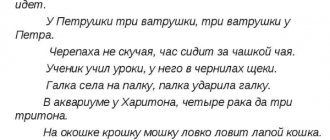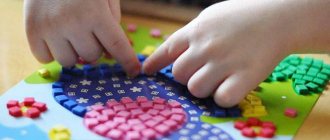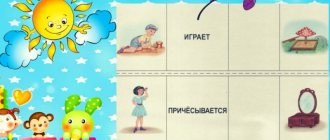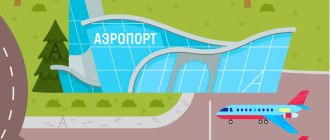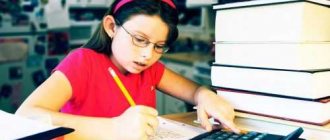Hello, friends! What are you complaining about? Is your child's reading technique poor? Okay, we'll treat you. Keep the recipe. I am prescribing special exercises for you to develop your reading technique. Take regularly, several times a day. And the reading technique will firmly stand on its feet, and then leap forward.
Such magical exercises really exist. And if you try, you can find hundreds of different techniques, approaches, and methods on the Internet. To be honest, my eyes widen, and my brain begins to slowly boil. You don't know what to choose.
In order to protect my readers from such problems, I allowed myself to make the choice myself. The article included only the most interesting and tasty, in my opinion, exercises that will undoubtedly help raise reading technique to the level required by the Federal State Educational Standard. I do not claim their authorship; they were developed by professionals: teachers, psychologists, professors.
But I claim to be the author of their names. They are too boring in the original version. Agree, “The Mystery of the Missing Sentence” sounds much more fun than “Visual Dictation by Professor I.T. Fedorenko." And it will certainly arouse greater interest among younger students.
List of exercises
And here he is! List of special reading exercises:
- "Half a watermelon"
- "Lost Letters"
- "Very sharp eye"
- "Sherlock"
- "Through the Looking Glass"
- "Mad Book"
- "The Birds Have Arrived"
- "Partisan"
- “Oh, once! Again!"
- "The Mystery of the Missing Proposal"
Exercise 1. “Half a watermelon”
Ask your child if, after seeing half a watermelon, he can imagine what a whole watermelon looks like? Of course, the answer will be yes. Now suggest conducting the same experiment with words.
Take a book and an opaque ruler. Cover one line in the book with a ruler so that only the top of the words is visible. Task: read the text, seeing only the tops of the letters.
Move the ruler higher and show only the bottom of the words. Let's read. This, by the way, is already more difficult.
For very young schoolchildren, you can offer another version of the game. Make cards with simple words. And then cut these cards into two halves along the words. You need to connect the two halves correctly.
How is it useful? Aimed at developing anticipation. Anticipation is foreknowledge. This ability of the brain, which gives us the opportunity, when reading, not to read absolutely all the words and letters. The brain already knows that they are there, so why waste time on them? Anticipation can be developed; it makes reading fluent, conscious, and easy.
Exercise 2. “Lost letters”
Another exercise to develop anticipation.
Letters and words sometimes get lost. But even without some letters and words we can read. Shall we try?
Write on paper, print or write with a marker on a special board the phrases that you see below.
Bookshelf.
New... T-shirt.
Big...spoon.
Red... cat.
Here's another phrase:
Bobik ate all the cutlets
He doesn’t share…….
And here are some more:
Ok-ok-ok - we will build…….
Yuk-yuk-yuk - ours is broken......
Task: read by guessing letters and words that are not there. For the next lessons, come up with your own phrases, use new phrases, catchphrases, and proverbs.
Exercise 3. “Eye is a diamond”
Look at the picture and draw the same rectangle. Place numbers from 1 to 30 in the cells, in random order, but not one after another. The numbers should be randomly scattered across the cells.
The schoolboy looks carefully at the picture with the sign.
And now, together with him, begin to count out loud: one, two, three, and so on until thirty.
The counting is even, not too fast, but not too slow.
Child's task:
- on the count of one, find and point to one with your finger;
- on the count of two - deuce;
- three - three, etc.
If a child hesitates with some number, then the score is not waiting for him, he needs to catch up, look for it faster. For kids, you can draw smaller signs, for example, 3X3 or 4X4.
What is the point of the exercise? It is aimed at increasing the viewing angle. In order to “catch” with your eyes when reading not one letter, not one word, but several words at once, or an entire line. The wider we look, the faster we will read.
One table can be used two or three times, then the arrangement of the numbers needs to be changed.
Courses for developing speed reading in children
The best way to quickly develop a skill or learn something is to undergo training in a special program.
Speed reading in 30 days
Would you like to quickly read books, articles, newsletters, etc. that interest you? If your answer is “yes,” then our course will help you develop speed reading and synchronize both hemispheres of the brain.
With synchronized, joint work of both hemispheres, the brain begins to work many times faster, which opens up much more possibilities. Attention , concentration , speed of perception are enhanced many times over! Using the speed reading techniques from our course, you can kill two birds with one stone:
- Learn to read very quickly
- Improve attention and concentration, as they are extremely important when reading quickly
- Read a book a day and finish your work faster
Sign up for a courseFree lesson
Reviews about the speed reading development course
Exercise 4. “Sherlock”
Place the words on a piece of paper. Very different, not very long. In no particular order. Kind of scatter them across the paper. Name one of the words and ask the child to find it. Words could be, for example:
frame, jelly, spoon, chair, horse, gold, soap, pen, mouse, mouth, knee, dog, summer, lake, cancer
Each next word will be found faster than the previous one. Since, while trying to find one word, the student will read others along the way and remember where they are. And that's all we need.
Thanks to Sherlock, the viewing angle increases. And reading speed.
And now in more detail: what are Schulte tables for?
1. Exercises with such tables are useful when training speed reading. Thanks to regular work with them, peripheral vision improves, the speed of information perception increases, as well as the amount of text that we can capture with our eyes at once, and therefore, reading speed increases.
2. Working with Schulte tables develops speed of thinking and visual memory. In addition, if you have learned to read faster, then you have the opportunity to study more of the literature you need and “pump up” your intelligence.
3. The Schulte table was originally developed by the German psychiatrist and psychotherapist Walter Schulte in the 1960s and 70s as a psychodiagnostic test for studying attention. And to this day, such tables are often used in psychology to determine the presence or absence of attention disorders and assess the level of performance. In this case, experts analyze the number of missing digits and the time spent.
4. Schulte tables are periodically used in neurolinguistic programming trainings in order to achieve a highly productive state when consciousness switches from critical thinking to performing logical and sequential operations.
Exercise 5. “Through the Looking Glass”
We found ourselves in a world through the looking glass, and everything is the other way around. And they even read everything not from left to right, but from right to left. Shall we try?
So, we read the lines in the books from left to right. Let me clarify, there is no need to turn the words themselves around. There is no need to read “tomegeb” instead of “behemoth”.
With this method of reading, the meaning of the text is lost. Therefore, all attention is switched to the correct and clear pronunciation of words.
Exercise 6. “Mad Book”
Tell your child that sometimes some ill-mannered books behave rather strangely. They suddenly take it and turn upside down.
The child reads aloud. After a while you clap your hands. The child's task is to turn the book upside down and continue reading from where he left off. At first, you can make marks with a pencil so as not to get too lost in the text. And so on several times. Two, three full turns of the book.
If your student is only in 1st grade, or maybe in 2nd grade, but reading is still very difficult, then you can read not a book with texts, but short simple words printed one after another on paper.
What will it give? Eye coordination and the ability to navigate through text will develop. A letter standard will be formed. And the processing of information by the brain will improve.
Bottom line
In this article, we discussed speed reading for children and learned that a child can be taught speed reading immediately after he learns to read whole words. And so that he can learn this faster, we have developed a special simulator that not only a child, but also an adult can train with!
Training on such a simulator helps you quickly learn to read words. All you need is to select the desired mode and start training. Don’t forget to sign up for our Speed Reading course in 30 days.
Exercise 7. “The birds have arrived”
Show your child the phrase “the birds have flown.” And ask to read it:
- calmly;
- joyfully;
- loud;
- quiet;
- sad;
- with irritation;
- with fear;
- mockingly;
- with anger.
What will this give us? Ability to read expressively. And convey feelings and emotions with your voice. Don't get hung up on this one phrase. You can read proverbs, sayings, and tongue twisters with different intonations.
Exercise 8. “Partisan”
The student reads the text (or individual words, if he is still very young) aloud. You say: "Partisan". At this signal, the student takes a pencil into his mouth (presses it between his lips and teeth) and continues to read to himself. At the signal “The partisan has escaped,” we take out the pencil and read aloud again. And so on several times.
Why is this? To eliminate pronouncing words while reading silently. Pronunciation is the enemy of fast reading. So you need to remove it. And when a pencil is clamped in your teeth, you won’t be able to speak.
Buzzing Reading
The more often a child reads, the better he will get at it. To train reading techniques, there is catastrophically little practice only in the classroom. To achieve good results, it is recommended to spend five minutes of reading in each lesson throughout the school day.
Such five-minute meetings are organized at the beginning of the lesson. Schoolchildren should have books on their desks for additional reading. At the teacher's signal, children begin to read in "buzz" reading mode. This technique implies that all children read at the same time. Moreover, this must be done in a low voice so as not to disturb each other. Each child reads at his own pace. After 5 minutes, the reading stops and the usual lesson continues, for example, mathematics, drawing or natural history.
There is no control or discussion of the content of what is read. This technique is used only for the purpose of increasing the time for daily reading. Thus, at least 30 minutes are spent on training, whereas in normal mode each student reads for a total of about 5 - 10 minutes for the entire school day.
Exercise 9. “Oh, once! Again!"
For this exercise we will need a stopwatch and a text to read.
Read for 1 minute. We pay attention to reading speed, but you can forget about expressiveness for now. Ready? Go!
The minute is up. Stop! Let's make a mark where we left off.
Let's rest a little and read the same text again. Go! In a minute we make a notch. Wow! Already more.
What will happen the third time? And the third time will be even better!
What does this give us? Increase reading speed. And the child's motivation. He will see for himself that he is capable of more.
What's happened
Speed reading is a person’s ability to perceive text at high speed. It is to perceive, and not just mechanically read. If you teach a child to swallow words at a phenomenal speed, without understanding what he has read, then speed reading will not help you with your studies, but quite the opposite.
Speed reading in the correct sense is usually understood as a developed skill in processing educational text. These are paragraphs from textbooks and articles on scientific topics. The reading speed should be at least 120-150 words per minute. At an older age it reaches up to 200 lexical units.
Any child can learn to speed read. But, according to psychologists and teachers, the optimal age is from 10 to 12 years. Although children 7 years old and even 6 years old have positive experience in using the technique.
Exercise 10. “The Mystery of the Missing Sentence”
In order to solve the mystery, we will need cards with sentences (look at the picture). There are 6 cards in total. Each has one sentence. The font is large and easy to read.
Let's prepare a notebook and pen. Let's start the exercise:
- Show your child the first card.
- The student reads the sentence and tries to remember it.
- After 6 - 8 seconds, remove the card.
- The child writes the sentence in a notebook from memory.
- Show the child the second card, etc. until the sixth sentence.
What's the point here?
As I already said, this is not actually a game, but visual dictations developed by Professor I.T. Fedorenko. There are 18 such dictations in total. Each has six sentences.
In our example, I used the very first dictation. What is their feature? Please count the letters in the first sentence of the dictation. There are 8 of them.
In the second - 9,
in the third - 10,
in the fourth and fifth 11,
It's already 12 in the sixth.
That is, the number of letters in sentences gradually increases and eventually reaches 46 in the last sentence of dictation 18.
You can easily find the texts of Fedorenko’s dictations on the Internet. One dictation can be used twice, three times, if the child cannot do everything correctly. By the fourth time everything usually works out.
It is convenient to use Microsoft Power Point to complete this exercise. The one in which presentations are usually made.
By playing “The Mystery of the Missing Sentence” you develop your working memory. When such memory is poorly developed, a child, having read the sixth word in a sentence, will not be able to remember the first. Practice visual dictations every day and you won’t have such problems.
Take breaks
You need to practice for 10-20 minutes, giving the child time for a short break. After a good workout, the break should be 20-30 minutes, no less, so that the brain has time to form new neural connections. This greatly increases efficiency.
During the break:
- you cannot: read, write, watch TV, play games, sit with a phone or tablet.
- you can and should: relax, take a walk, breathe fresh air, eat (if it’s time, you don’t need to eat again), play with soft toys, drive the car, and so on.

